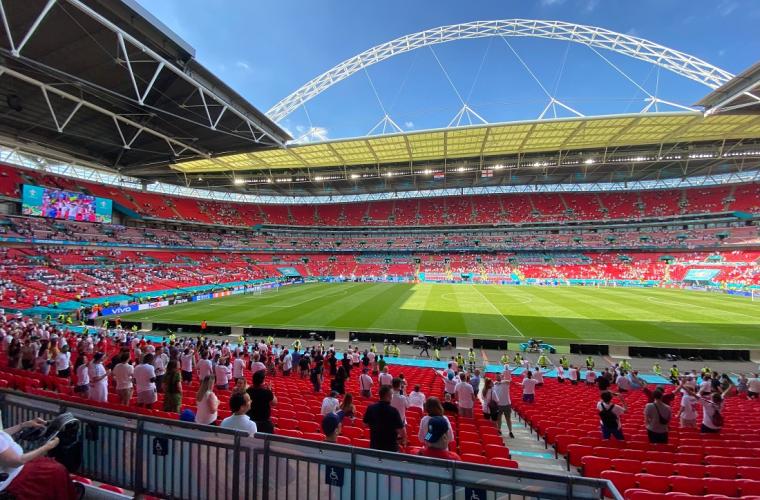The Government should blow the full-time whistle on outdated charging regulations that mean the local taxpayer is having to foot the £1 million annual bill for sports clubs to have ground safety certification.

The Government should blow the full-time whistle on outdated charging regulations that mean the local taxpayer is having to foot the £1 million annual bill for sports clubs to have ground safety certification.
Councils are responsible for sports ground safety certification for the 92 English Premier League and English Football League clubs, and other sports clubs, but current laws dating back to 1975 limit how much they can charge them.
It means that councils, and therefore the local taxpayer, are having to pick up the remainder of any costs.
New research by the LGA estimates this to amount to over £1.1 million per year, with councils paying an average cost of £5,869 per sports ground to oversee sports safety– a large number of which will be football stadia.
Initial evidence also indicates that the costs to councils may be higher for football stadia than for other sports grounds – in some cases over £20,000 per ground.
Ahead of the Premier League returning this evening, the LGA said given pressures on budgets and staff time, clubs – many of which are extremely wealthy – should pay the fees to cover the cost of the work councils do.
It is calling for a level playing field with other businesses that councils regulate, where the cost of a licence and compliance monitoring is met by the businesses that benefit from it.
The LGA wants the Government to tackle the issue and amend the Safety of Sports Grounds Act 1975 and linked regulations from 1987 which set out what councils can charge for, as part of the legislation to introduce a new football regulator.
The Act requires all EPL and EFL stadia with a capacity exceeding 5,000 to have a safety certificate.
Requirements for a certificate include ensuring the structural integrity of the stadium, provisions for means of escape, adequate fire precautions and emergency services co-ordination. There should also be provision of suitable management strategies for stewarding, crowd control, match safety arrangements, evacuation procedures and contingency plans.
While councils issue the safety certificate, responsibility for implementing the requirements and responsibility for the safety of spectators rests at all times with the sports ground management. However, councils undertake annual audits and during performance inspections to ensure safety standards are being implemented properly.
The LGA says that while it recognises some smaller clubs might find it challenging to pay for this, it will be down to the football pyramid and other sports collectively to consider how they can support such clubs to pay. It says it is vital that the game helps those smaller clubs where needed.
Cllr Heather Kidd, Chair of the LGA’s Safer and Stronger Communities Board, said:
“Councils want to work with football and other sports clubs to ensure they have all the necessary ground safety measures in place.
“Football and sport have changed massively since 1975 when Kevin Keegan was footballer of the year and Brentford were in the Fourth Division. The current charging regulations are outdated and in need of reform. It is perverse that with the revenue in some sports, particularly football, that clubs are not meeting the costs of this vital work, unlike other businesses councils regulate, which rightly pick up the costs of regulation through the licence fees they pay.
“Some of our top clubs are paying their players hundreds of thousands of pounds a week, while at the same time councils face significant financial pressures to provide vital local services, and this is an extra cost they shouldn’t have to pick up.
“It is only fair that clubs pay the fees involved to cover the full cost of issuing safety certification, rather than for this to fall to the taxpayer.
“While these fees would not be huge, we do recognise this might be a challenging additional cost for some smaller clubs also struggling financially. However, there is enough collective wealth within the game to ensure that clubs, rather than taxpayers, should fund this.”
Notes to editors
The LGA Research and Information Team ran a survey of councils with sports grounds to estimate the total cost to councils of maintaining safety standards at these sports groups. Seventeen councils responded to this survey, providing information about 47 sports grounds.
Initial analysis of the data led to the research team highlighting a couple of potential outliers within the dataset – Wembley Stadium and Wimbledon Tennis Club, both of which had considerably higher reported costs than other venues due to their size and status. As these venues would not be representative of other sports grounds, an average figure for safety costs per sports ground was calculated, excluding the totals from the councils containing these two outliers. This resulted in an average of £5,869 per sports ground.
The mean cost per council of £5,869 was then multiplied by the number of eligible stadiums in each council to create an estimated cost for all councils of £815,791. The research team then added the costs for the councils containing the two outliers to this total to create an overall cost of approximately £1,144,000 for all councils.
